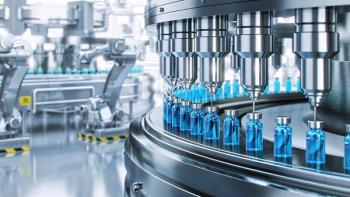
- BioPharm International-09-01-2018
- Volume 31
- Issue 9
FDA Seeks to Enhance Manufacturing of Cell and Gene Therapies
More consistent and reliable production processes are critical for advancing innovative treatments.
Editor's Note: This article was original posted online on August 2, 2018.
While cell- and gene-therapy products hold the promise of transforming the treatment of many diseases, difficulties in achieving consistent process control could stymie advancement in this field, cautions Peter Marks, director of FDA’s Center for Biologics Evaluation and Research (CBER). It’s “not simple” to bring a clinical production process to commercial scale, he says, voicing fears that important manufacturing issues could hinder efforts to advance new discoveries able to transform medical care.
With more than 100 investigational new drug applications (INDs) filed last year for gene-therapy products and multiple R&D programs underway, FDA seeks to emphasize the challenges of developing and validating relevant manufacturing processes. CBER is receiving dozens of applications to test new gene therapies, Marks reported at the Cell and Gene Therapy symposium in July 2018, sponsored by CASSS. He acknowledged that the logistics of manufacturing autologous cells can be particularly challenging, and that limited capacity in cell lines stymie efforts to meet the demand for product development. While there is great excitement over the potential of CAR-T (chimeric antigen receptor) cell therapy to target and activate T cells to eliminate a cancerous or other undesirable cell type, Marks cautioned that the use of genetically modified cellular therapies to achieve a durable therapeutic effect requires a consistent process for producing and characterizing cells.
Marks suggested that new manufacturing technology, such as partially automated closed systems and modular manufacturing facilities, could help address some of these difficulties. He cited a lack of capacity for manufacture of lentiviral and adeno-associated virus (AAV) vectors for limiting clinical development and noted that the process of production in current cell lines is not able to meet demand despite some improvement over the past few years. Clinical development is crucial, but industry needs to have “manufacturing under control,” Marks observed.
More support
FDA’s Regenerative Medicine Advanced Therapy (RMAT) program can help expedite oversight of certain tissue and cell products and gene therapies by providing support and assistance in developing products that treat serious or life-threatening conditions and address unmet medical needs. CBER had granted the RMAT designation to 24 products as of June 30, 2018, and more new products seek to qualify for that treatment.
CBER also is working with the National Institute of Standards and Technology (NIST) and other public and private organizations to develop standards for advancing research and development of cutting-edge therapies. CBER scientists also are collaborating with public and private partners in initiatives to advance the development of improved cell lines for vector production. At the CASSS symposium, Samantha Maragh of NIST provided an update on collaborative efforts to develop measurement standards for genome editing, including an assay qualification process that would expand the capability to make targeted DNA changes. The NIST genome editing consortium includes a range of industry members and seeks experts who can help design reference materials and refine assay protocols.
In addition, manufacturers pursuing initial development of novel gene and cellular therapies now may gain early advice from less formal meetings with FDA experts. A new INTERACT program (Initial Targeted Engagement for Regulatory Advice on CBER producTs) replaces current pre-pre-IND meetings for all CBER products. The aim is to help less experienced sponsors and investigators better understand FDA expectations for preclinical testing, aspects of manufacturing for first-in-human trials, and initial clinical development strategies, with the aim of avoiding unnecessary or inadequate studies. At the same time, CBER staff hopes to gain early insight into new products and technologies entering the R&D pipeline. These very early meetings still will be followed by more formal meetings between sponsors and FDA staff at pre-IND and pre-biologic license application (BLA) meetings, as
FDA further outlined in
Additional
Article Details
BioPharm International
Vol. 31, No. 9
September 2018
Pages: 8-9
Citation
When referring to this article, please cite it as J. Wechsler, "FDA Seeks to Enhance Manufacturing of Cell and Gene Therapies," BioPharm International 32 (9) 2018.
Articles in this issue
over 7 years ago
Lightweight Actuator for Aseptic Valvesover 7 years ago
Be a Part of the Solutionover 7 years ago
Evaluating the Rewards vs. the Risks of Automationover 7 years ago
Checking Incoming Goodsover 7 years ago
Biopharma Demand Continues to Influence CMO Actionsover 7 years ago
QbD in the Development of ADCs with PBD Dimer Warheadsover 7 years ago
Patenting Antibodies in Europeover 7 years ago
Elements in Raw Materials May Impact Product QualityNewsletter
Stay at the forefront of biopharmaceutical innovation—subscribe to BioPharm International for expert insights on drug development, manufacturing, compliance, and more.




